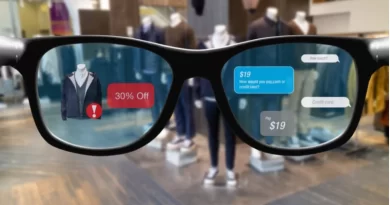The Metaverse’s Future of Work: How Virtual Reality Technologies Are Changing the Way We Do Business and Collaborate With Coworkers
Virtual reality technology is changing the way we work through virtual meetings, workspaces, training, and education in the metaverse, despite challenges and limitations.
The term “metaverse” refers to a collective virtual shared space, created by the convergence of virtually enhanced physical reality and physically persistent virtual reality. Virtual reality (VR) technologies have come a long way since their inception and are now being used in a variety of ways in the world of business and work. In this article, we will explore how VR technologies are changing the way we do business and collaborate with coworkers.
Virtual Meetings and Conferences
VR technologies are being used in the world of work is through virtual meetings and conferences. With the advent of VR, remote workers can now join meetings and conferences as if they were in the same room as their colleagues. VR meeting platforms like Spatial, VRgineers, and Bigscreen allow users to interact in a shared virtual space, where they can also present documents, videos, and even conduct group activities in a more interactive way. This technology eliminates the need for travel, saving companies time and money. Additionally, the use of VR in meetings and conferences allows for more flexibility in scheduling and the ability to include remote employees who may not have been able to participate in an in-person meeting.
Virtual Workspaces and Collaboration
VR technologies are changing the way we work is through the use of virtual workspaces and collaboration. Platforms like Facebook Horizon, Engage, and Sansar allow users to create a virtual workspace where they can conduct meetings, work on projects, and even hold virtual events. These virtual workspaces give employees the opportunity to work together regardless of their physical location, breaking down the barriers that traditional in-person work environments can create. In addition, VR-based collaboration tools like Gravity Sketch, Gravity Jack and Collada provide a more intuitive way for team members to communicate and work together on designs, models and projects.
Virtual Training and Education
VR technologies are also being used in the field of training and education. With VR, employees can receive hands-on training in a safe, simulated environment. For example, VR-based training programs like VRr Experience and PIXEL provide safety training for employees in industries like construction, engineering, and manufacturing. Additionally, VR-based training programs can also help employees learn new skills and improve their productivity. Similarly, VR can provide a more engaging and interactive way to learn and retain information, making it an ideal tool for education in fields such as medicine, architecture, and engineering.
Challenges and Limitations
Despite the many benefits that VR technologies can offer for the future of work and collaboration, there are still some challenges and limitations that need to be addressed.
High cost of VR equipment: The current cost of VR headsets and other equipment can be prohibitively expensive for some businesses and individuals, making it difficult for them to adopt the technology. Additionally, the cost of developing and maintaining VR applications can also be high, which could discourage small and medium-sized businesses from using VR in their operations.
Accessibility: Not all employees may have access to VR equipment or be able to use it due to physical or cognitive limitations. This can create an unequal playing field for those who do not have access to the technology, which could lead to discrimination or exclusion.
Latency and tracking issues: Latency is the delay between the user’s movements and the corresponding response in the virtual environment. Tracking issues occur when the movement of the user’s head or hand controller is not accurately translated into the virtual environment, this can make it difficult for users to fully immerse themselves in the virtual environment.
privacy and security risk: Lastly, VR technologies also pose a privacy and security risk, as virtual environments can be hacked and users’ personal information can be compromised. Since VR is still a relatively new technology, many of these issues have not been fully addressed yet and will require further research and development.
Conclusion
In conclusion, VR technologies are already making a significant impact on the way we do business and collaborate with coworkers. The use of VR for virtual meetings and conferences, virtual workspaces and collaboration, and virtual training and education is breaking down the barriers of traditional in-person work environments, making it possible for employees to work together regardless of their location. While challenges and limitations still exist, ongoing research and development efforts are making it increasingly likely that VR technologies will continue to shape the future of work.



